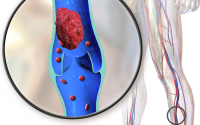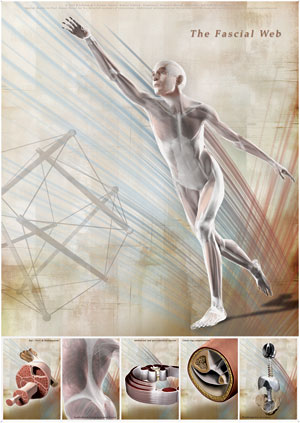C-tactile afferents and affective touch
A review article published in Neuroscience & Biobehavioral Reviewsaddresses the connection between strong emotional bonds and physical touch in relationships, which has prompted research into the neurological mechanisms linking social and tactile processes.
The discovery of C-tactile afferents (CTs), a class of unmyelinated sensory nerves ideal for encoding gentle skin indentation and motion is usually associated with “affective touch.” The growing interest in CTs and affective touch across various academic disciplines has led to diverse opinions and theoretical positions, causing uncertainty regarding their roles and meanings.
The article aims to resolve this uncertainty by documenting the history and current state of CT and affective touch research, analyzing the semantic usage of these terms.
A Historical Perspective
In the early 20th century, Adrian and Zotterman conducted pioneering research on peripheral nerves in cats, identifying specific afferent nerve fibers responsible for proprioception, touch, and pain. They initially focused on myelinated fibers due to their strong response to stimulation but later discovered unmyelinated C-fiber afferents implicated in after-sensations of touch and tickle.
With technology, human knowledge of somatosensory afferent activity can be studied, and revealed C-mechanoreceptive afferents in human skin, particularly on the arm, named “C-tactile” (CT) afferents. CTs convey the pleasant aspects of light touch, emphasizing the role of touch in generating positive tactile affect.
Researchers initially hypothesized the affective touch hypothesis, suggesting CTs play a vital role in affiliative human interactions. This theory distinguishes CTs from discriminative touch afferents and highlights their contribution to pleasant touch perception.
Building on this hypothesis, scientists proposed that Aβ and CT afferents support central representations of discriminative and affective touch, similar to the concept of two dimensions in pain processing: sensory-discriminative and affective-motivational. These dimensions encode physical stimulus properties and stimulus valence in touch and pain processing. However, it’s important to note that these pathways are not entirely distinct, and interactions between them likely occur.
Affective Touch
The psychology of touch has gained significant interest, with a focus on the importance of tactile comfort in development and well-being. Harlow and Zimmerman’s research with macaque offspring showed that infants preferred clothed surrogates over wire ones, emphasizing the role of tactile comfort in affectional responses.
Researchers explored the role of CT (C-tactile) afferents in providing the benefits of touch, especially when touch occurs at CT optimal stroking velocities (around 1–10 cm/s). Such touch reduced heart rate in infants and alleviated pain responses during medical procedures. CTs were considered to influence an infant’s interoceptive state and promote homeostasis. Gentle touch also showed potential for enhancing pro-social processes and the developing social brain in both animals and humans.
In adults, gentle stroking at CT optimal velocities was found to feel pleasant and enhance the processing of concurrent social signals, such as a speaker’s voice. This type of touch was associated with higher humanness ratings and reduced predictability, possibly contributing to tactile pleasure.
Recent research in mice demonstrated that tactile interactions with conspecifics activated oxytocin neurons, highlighting the link between CT-relevant touch and social interactions. Moreover, both rodents and humans have shown that CT-targeted touch can shape preferences for touch-associated stimuli, reinforcing the importance of this touch in forming social bonds.
However, it’s essential to recognize that affective touch is not solely dependent on CT activation. Painful or ticklish stimuli, which involve different nerve fibers, can also be affective. Additionally, the strict division between CTs and Aβ fibers and between affective and discriminative touch has been challenged by recent evidence, suggesting a more complex interplay between these systems.
Furthermore, other psychological attributes, such as touch intensity, roughness, and humanness, may be equally relevant in describing the mental effects of touch. CT input may not solely induce positive affect but could reinforce gentle touch from conspecifics, promoting social bonding.
Conclusions
The discovery of C-tactile (CT) fibers has led to the development of the affective touch hypothesis, which suggests that CTs play a role in conveying pleasant and emotional touch experiences. However, the association between “affective touch” and “C-tactile” should be understood loosely, as there is only partial overlap in the meanings of these terms.
Affective touch encompasses both positive and negative tactile experiences and involves various types of receptors beyond CTs. CT signaling seems to be particularly relevant for reinforcing the effects of gentle touch, but our understanding of CTs is still incomplete. We are just starting to grasp the complexity of CTs and how their signaling characteristics can transform a simple physical connection into an affectionate one, which has significant implications for physical and mental well-being.

